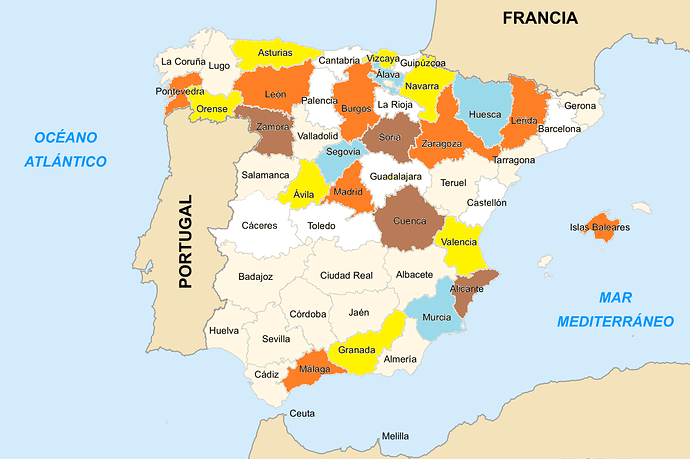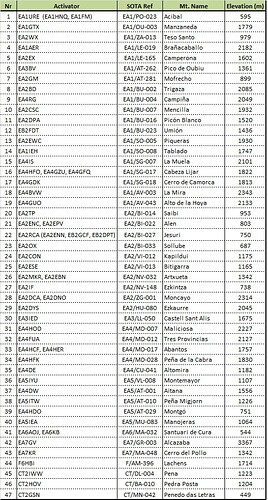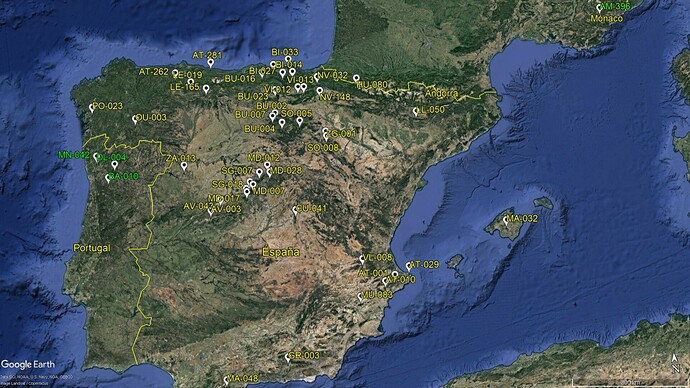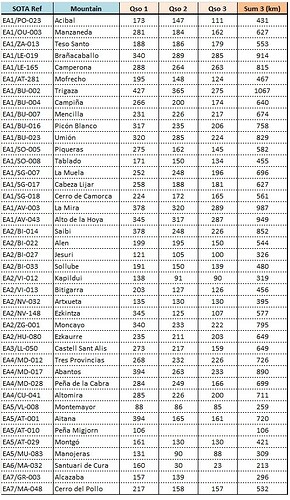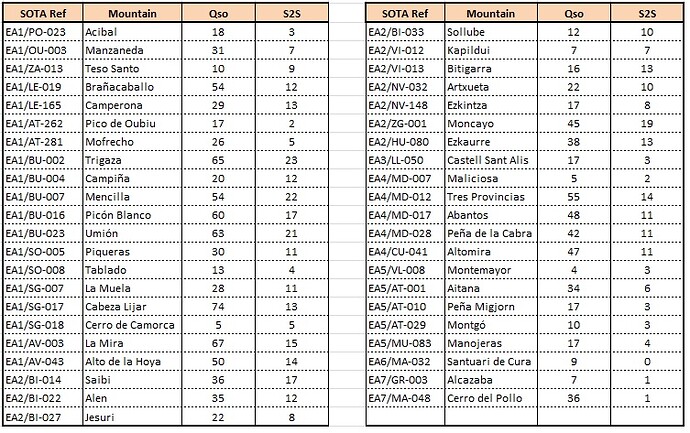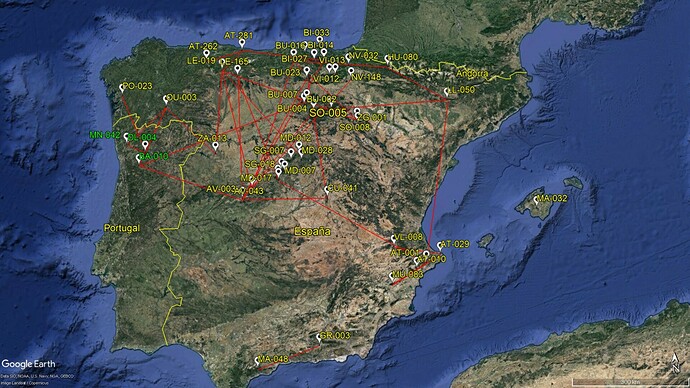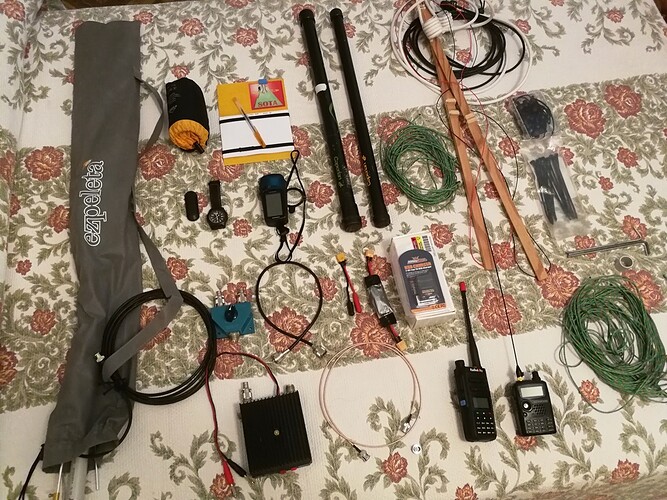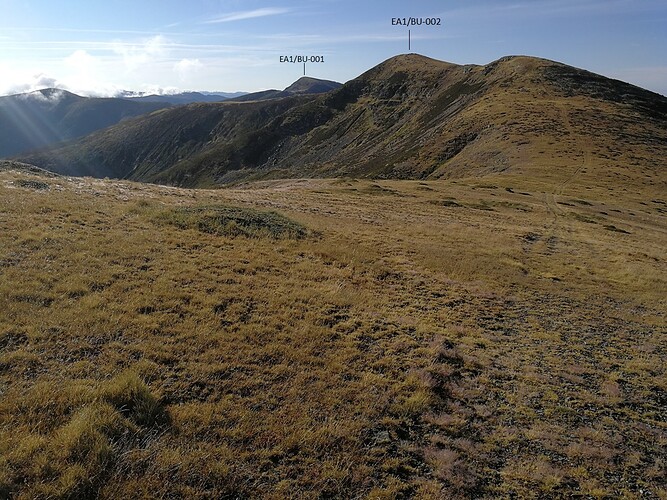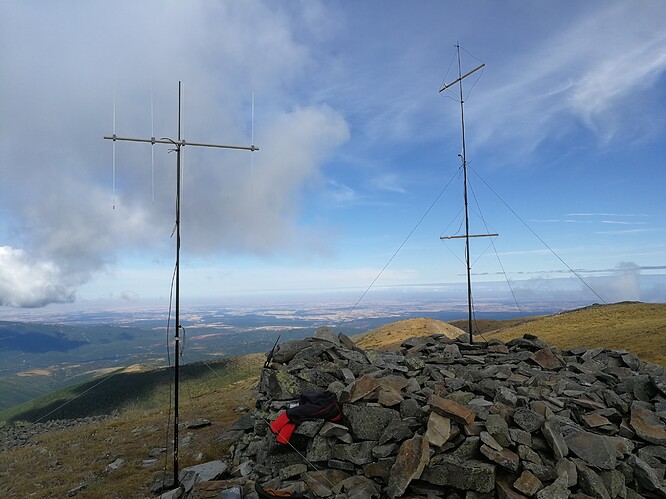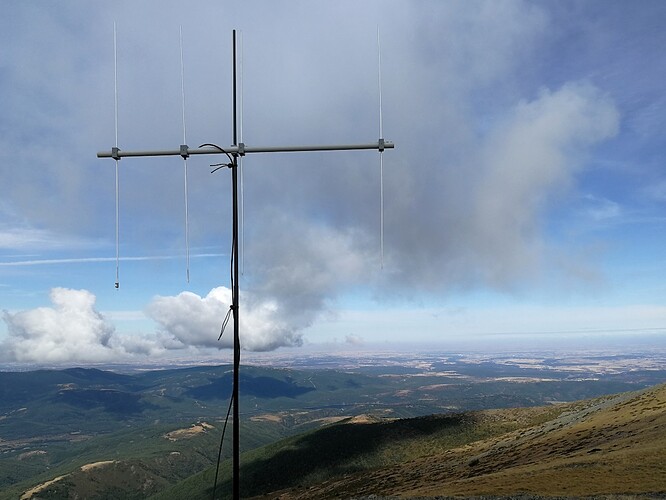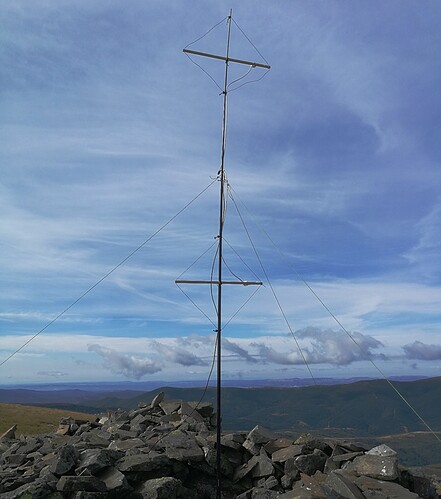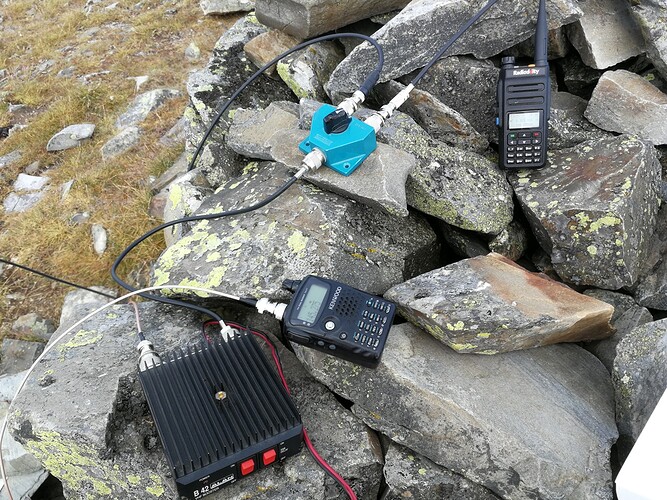This event took place on August the 1st 2021, and after collecting all data here it’s a report.
For third year in a row, we proposed a massive SOTA activation from many different summits running in VHF FM. The objectives we set were:
-
Enhance contacts on VHF FM trying to cover long distances.
-
Promote the use of VHF band for which many hams have radio gear on disposal, but that nevertheless is underused nowadays.
-
To spread SOTA scheme and show how it is possible to begin activating using low powered simple gear and small sized antennas, while having a lot of fun. This could attract new activators and chasers to SOTA.
-
Check and learn about VHF propagation in praxis, to be aware of the influence of elevation, radiated power, the kind of antenna and the effect of the sea.
1. Planning the event
We started the project with an open invitation to prepare all details for this event. A group of people joined and we identified a date and target summits; this took a lot of talks and discussion to get an agreement.
Then we published the plan in the SOTA reflector and in other ham forums inviting some others to participate. At a point, when we were close to the date, we assigned frequencies for every activator to minimize interference and to make feasible chasing them.
The previous week weather was a bit unstable and we decided for safety reasons to move the date a bit and the event was finally held on August the 1st 2021.
We are very happy with the results achieved; there was a lot of people involved participating, and a few unexpected additional activators joined the event in the last minute.
2. Band plan
Making the allocated Simplex FM frequencies useable for all the simultaneous operators that would meet on air was a bit of a challenge. We decided to assign 16 fixed channels between 145.200 a 145.575 MHz, espaced 25 KHz, so that we wouldn’t interfere with the assigned frequencies for relays or other modes. Then we distributed such channels between the participants.
Due to the fact there were more than 16 participants we assigned some of them to a single channel choosing well separated activators to avoid hearing each other and minimizing the mess between chasers.
F6HBI, Gerald, joined again this year, and we set 144.600 MHz for him to avoid the huge interferences he found in the past in 145 MHz simplex range.
3. Activators list
There were 43 EA summits activated simultaneously that day on VHF FM, spread over 23 regions in Spain, plus 1 from France (F6HBI) and 3 in Portugal.
These were the activated regions in EA:
And here the complete list of the activated summits:
Now the map with references of the activated summits:
4. Distances achieved
Here you can see the bigger distances in kilometers logged in this event.
As you may guess, summit elevation, antenna and power used, obstacles surrounding each mountain and tropospheric propagation influenced on the results for any of the activated summits.
The majority of long distance qso for every activator were S2S contacts between portable operators, as their path was improved by a high elevation in both ends.
On the next chart there is a summary with all 3 longer distances achieved from any summit (only contacts higher than 100 km (62 mi) are shown in this chart).
5. Summary of QSO and S2S contacts
Analysis of the qso logged by all activators in the event that morning shows a total of 1312 qso.
204 qso were logged as of S2S contacts; it’s a blast!
This chart summarizes all qso logged plus the S2S from each summit:
We hightlight here the more distant S2S achieved, enhanced by the height in some of the summits and the path between them:

This map here below shows the more representative S2S qso of the event (longer distance); not all have been included as if it was the case the crowd of lines would cross and make it difficult to distinguish paths:
6. Operators abroad EA
A brief credit here for F6HBI Gerald, who has participated in all 3 editions so far. He was there up activating again this year but unfortunatelly he couldn’t make it through to get any DX this year. It’s a pity in this edition there were few activators at the optimum range for hime. The EA6 activator could have heard him but the chosen summit was very bad with a huge RF overload making the S2S not possible this time.
Thanks Gerald for being so suportive this past years with us. Look forward to get more stations involved in the Eastern part of EA in the future to make this qso feasible.
In the other hand we meet 3 unexpected ops from Portugal, CT2IWW Paulo, CT2HOV Nuno and CT2GSN Joao, that made possible to have international S2S this time. Thanks all so much.
7. Conclusion
-
53 ops activated 47 SOTA summits simultaneously on VHF FM. That is 12 more than in the previous 2020 edition.
-
204 S2S qso were logged out of 1312 entries as seen in the Sota database.
-
Propagation this year was not very consistent inland but the best recorded distance was 427 km (265 mi) and a good number of qso ranging 200 to 400 km were achieved.
-
Lots of ham which are not frequent chasers in SOTA got involved from home or traveled to elevated areas in the countryside for chasing us. The VHF FM portion of the band was crowded for several hours during this event.
-
Activators had a lot of fun. Many operators unaware about SOTA have shown interest for this scheme and want to get involved.
Thanks everybody for supporting this activity and promote such a good vibrations in the band.
73
EA2BD Ignacio, EA2DCA Alberto.
Ps: I post separately some pictures of the gear I used during the event
